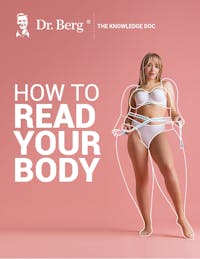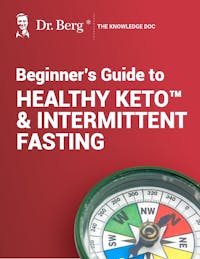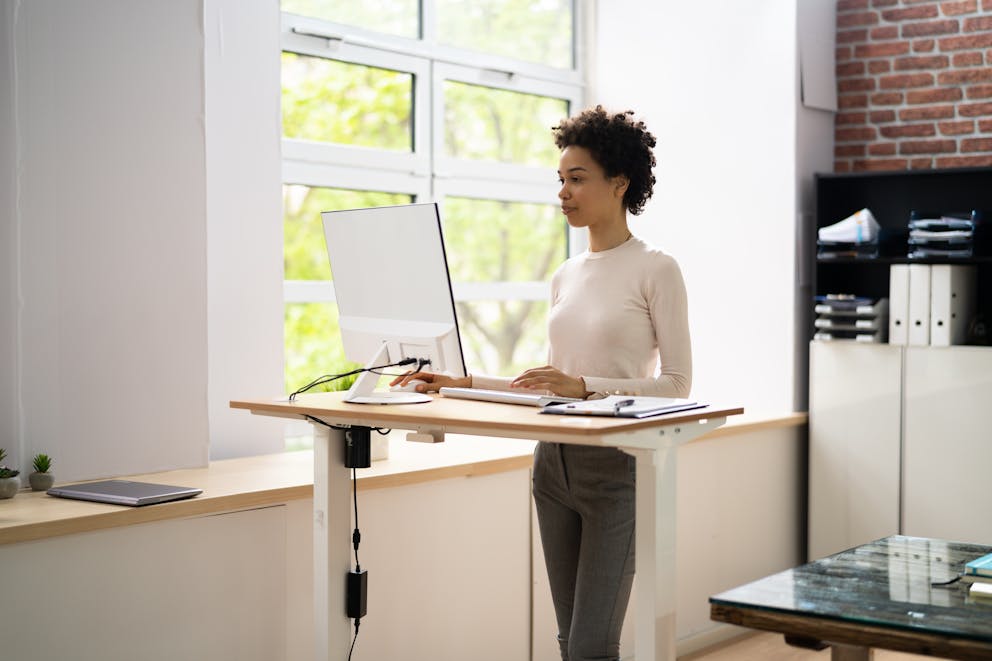What Causes a Tight Psoas on One Side?

How to Read Your Body
Learn to recognize common symptoms and uncover their underlying health issues
Understand the signs of nutrient deficiencies to manage your health
Explore the four metabolic body types and the core factors that influence them
Interpret your body's signals from head to toe to identify potential health concerns

How to Read Your Body
Learn to recognize common symptoms and uncover their underlying health issues
Understand the signs of nutrient deficiencies to manage your health
Explore the four metabolic body types and the core factors that influence them
Interpret your body's signals from head to toe to identify potential health concerns

How to Read Your Body
Learn to recognize common symptoms and uncover their underlying health issues
Understand the signs of nutrient deficiencies to manage your health
Explore the four metabolic body types and the core factors that influence them
Interpret your body's signals from head to toe to identify potential health concerns

How to Read Your Body
Learn to recognize common symptoms and uncover their underlying health issues
Understand the signs of nutrient deficiencies to manage your health
Explore the four metabolic body types and the core factors that influence them
Interpret your body's signals from head to toe to identify potential health concerns

How to Read Your Body
Learn to recognize common symptoms and uncover their underlying health issues
Understand the signs of nutrient deficiencies to manage your health
Explore the four metabolic body types and the core factors that influence them
Interpret your body's signals from head to toe to identify potential health concerns

How to Read Your Body
Learn to recognize common symptoms and uncover their underlying health issues
Understand the signs of nutrient deficiencies to manage your health
Explore the four metabolic body types and the core factors that influence them
Interpret your body's signals from head to toe to identify potential health concerns

How to Read Your Body
Learn to recognize common symptoms and uncover their underlying health issues
Understand the signs of nutrient deficiencies to manage your health
Explore the four metabolic body types and the core factors that influence them
Interpret your body's signals from head to toe to identify potential health concerns

How to Read Your Body
Learn to recognize common symptoms and uncover their underlying health issues
Understand the signs of nutrient deficiencies to manage your health
Explore the four metabolic body types and the core factors that influence them
Interpret your body's signals from head to toe to identify potential health concerns

How to Read Your Body
Learn to recognize common symptoms and uncover their underlying health issues
Understand the signs of nutrient deficiencies to manage your health
Explore the four metabolic body types and the core factors that influence them
Interpret your body's signals from head to toe to identify potential health concerns

How to Read Your Body
Learn to recognize common symptoms and uncover their underlying health issues
Understand the signs of nutrient deficiencies to manage your health
Explore the four metabolic body types and the core factors that influence them
Interpret your body's signals from head to toe to identify potential health concerns

How to Read Your Body
Learn to recognize common symptoms and uncover their underlying health issues
Understand the signs of nutrient deficiencies to manage your health
Explore the four metabolic body types and the core factors that influence them
Interpret your body's signals from head to toe to identify potential health concerns

How to Read Your Body
Learn to recognize common symptoms and uncover their underlying health issues
Understand the signs of nutrient deficiencies to manage your health
Explore the four metabolic body types and the core factors that influence them
Interpret your body's signals from head to toe to identify potential health concerns

Beginner’s Guide to Healthy Keto & Intermittent Fasting
Receive a step-by-step guide to starting Healthy Keto® and intermittent fasting
Learn about foundational principles and best practices for beginners
Get detailed visual guidance on portion sizes and meal composition
Discover how to set achievable goals and monitor your progress
Find practical tips for overcoming common challenges and staying motivated

Beginner’s Guide to Healthy Keto & Intermittent Fasting
Receive a step-by-step guide to starting Healthy Keto® and intermittent fasting
Learn about foundational principles and best practices for beginners
Get detailed visual guidance on portion sizes and meal composition
Discover how to set achievable goals and monitor your progress
Find practical tips for overcoming common challenges and staying motivated

Beginner’s Guide to Healthy Keto & Intermittent Fasting
Receive a step-by-step guide to starting Healthy Keto® and intermittent fasting
Learn about foundational principles and best practices for beginners
Get detailed visual guidance on portion sizes and meal composition
Discover how to set achievable goals and monitor your progress
Find practical tips for overcoming common challenges and staying motivated

Beginner’s Guide to Healthy Keto & Intermittent Fasting
Receive a step-by-step guide to starting Healthy Keto® and intermittent fasting
Learn about foundational principles and best practices for beginners
Get detailed visual guidance on portion sizes and meal composition
Discover how to set achievable goals and monitor your progress
Find practical tips for overcoming common challenges and staying motivated

Beginner’s Guide to Healthy Keto & Intermittent Fasting
Receive a step-by-step guide to starting Healthy Keto® and intermittent fasting
Learn about foundational principles and best practices for beginners
Get detailed visual guidance on portion sizes and meal composition
Discover how to set achievable goals and monitor your progress
Find practical tips for overcoming common challenges and staying motivated

Beginner’s Guide to Healthy Keto & Intermittent Fasting
Receive a step-by-step guide to starting Healthy Keto® and intermittent fasting
Learn about foundational principles and best practices for beginners
Get detailed visual guidance on portion sizes and meal composition
Discover how to set achievable goals and monitor your progress
Find practical tips for overcoming common challenges and staying motivated

Beginner’s Guide to Healthy Keto & Intermittent Fasting
Receive a step-by-step guide to starting Healthy Keto® and intermittent fasting
Learn about foundational principles and best practices for beginners
Get detailed visual guidance on portion sizes and meal composition
Discover how to set achievable goals and monitor your progress
Find practical tips for overcoming common challenges and staying motivated

Beginner’s Guide to Healthy Keto & Intermittent Fasting
Receive a step-by-step guide to starting Healthy Keto® and intermittent fasting
Learn about foundational principles and best practices for beginners
Get detailed visual guidance on portion sizes and meal composition
Discover how to set achievable goals and monitor your progress
Find practical tips for overcoming common challenges and staying motivated

Beginner’s Guide to Healthy Keto & Intermittent Fasting
Receive a step-by-step guide to starting Healthy Keto® and intermittent fasting
Learn about foundational principles and best practices for beginners
Get detailed visual guidance on portion sizes and meal composition
Discover how to set achievable goals and monitor your progress
Find practical tips for overcoming common challenges and staying motivated

Beginner’s Guide to Healthy Keto & Intermittent Fasting
Receive a step-by-step guide to starting Healthy Keto® and intermittent fasting
Learn about foundational principles and best practices for beginners
Get detailed visual guidance on portion sizes and meal composition
Discover how to set achievable goals and monitor your progress
Find practical tips for overcoming common challenges and staying motivated

Beginner’s Guide to Healthy Keto & Intermittent Fasting
Receive a step-by-step guide to starting Healthy Keto® and intermittent fasting
Learn about foundational principles and best practices for beginners
Get detailed visual guidance on portion sizes and meal composition
Discover how to set achievable goals and monitor your progress
Find practical tips for overcoming common challenges and staying motivated

Beginner’s Guide to Healthy Keto & Intermittent Fasting
Receive a step-by-step guide to starting Healthy Keto® and intermittent fasting
Learn about foundational principles and best practices for beginners
Get detailed visual guidance on portion sizes and meal composition
Discover how to set achievable goals and monitor your progress
Find practical tips for overcoming common challenges and staying motivated
The psoas is a group of muscles that connects your upper body to your pelvis and legs. Tight psoas muscles develop due to poor posture or prolonged periods of sitting and can lead to persistent hip, pelvic, and lower back issues.
Discover what causes a tight psoas on one side and learn stretching techniques that help improve mobility and relieve psoas muscle pain.

What is the psoas muscle group?
The psoas muscle group, also known as the iliopsoas muscle, consists of the psoas major and the iliacus.
These muscles are located deep within the lower abdomen and connect the torso to your pelvis and legs.
It’s one of the primary hip flexor muscles needed to flex the hip joint, which lifts the thigh towards the abdomen, a movement necessary for walking, running, and climbing stairs.
In addition, the psoas muscles gently massage your abdomen when you inhale and exhale. This helps stimulate blood flow and nutrient exchange to vital organs, including the adrenal glands, kidneys, uterus, and intestines.
Watch the video below to discover the best stretch techniques to relax tight psoas muscles.
What causes a tight psoas on one side?
Most muscles are symmetrical, which means that you have a similar set of muscle groups on both sides of your body.
If certain muscles are stronger or more active than on the opposite side, it can lead to increased tension on the lumbar spine, creating tight psoas muscles on one side of the body.
Sitting all day, especially in combination with poor posture, can lead to shortening and tightening of the psoas muscles.
In some cases, structural issues in the spine, hips, or pelvis can also lead to a tight psoas on one side.
Conditions like scoliosis, a flattened lumbar spine, functional leg length discrepancy, or tight hamstrings pulling on lower back muscles can affect the alignment of the hip sockets, which causes muscle compression and tension in the psoas.
In addition, repetitive or excessive use of the hip flexors, such as long-distance running or cycling, can lead to overuse and tightness, which explains why endurance athletes are at increased risk of psoas muscle imbalance.

Symptoms of a tight psoas
A tight psoas can lead to the compression of lumbar vertebrae linked to discomfort and pain in the lower back, hips, and pelvis.
Tense psoas muscles can compress spinal and abdominal nerves, which can cause nerve pain and tingling sensations in the groin and thigh.
Psoas muscles create a structural shelf for your pelvic organs, and an extremely tight psoas can impede blood flow and nerve impulses around the pelvic organs.
In fact, research published in Abdominal Imaging found that psoas issues can impede the blood circulation of internal organs and lumbar nerves, linked to severe menstrual cramps, bowel problems, and urinary bladder issues.

How to get rid of psoas tightness
It’s important to determine first if you have developed a weak or tight psoas on one side or if the issue affects both sides of your body.
How to test your psoas muscles for tightness
This test is best done with the help of a friend or family member.
Lie on your stomach, face down.
Keeping your legs straight, raise your left leg into the air as far as it will go.
Repeat with the right leg.
Have your partner assess the range of motion for both legs.
If one leg didn’t rise as high as the opposite leg, it’s likely a tight psoas issue on this side, and regular psoas stretches can improve mobility and help fix lower back pain fast.
Stretching a Tight Psoas Muscle
Stretching a tight psoas is crucial to increase your range of motion, improve core stability, and alleviate muscular discomfort and pain.
Psoas stretch 1:
Lie on your back, facing up.
Place a foam roller underneath the glute on your tight psoas side.
Bend your other knee while positioning your foot flat on the ground.
Make sure the tight leg is straight, and let it fall and stretch towards the floor.
You should feel a gentle stretch through the hip and pelvis.
Hold the stretch for two minutes.
Psoas stretch 2:
Lie face up on the side of a couch or bed.
Allow the leg of your tight psoas side to fall toward the floor.
Keep your knee straight, and stretch your leg down toward the ground as far as you can.
Release and stretch again.
Repeat this several times.
If you experience a sharp pain in your lower back, hip socket, or leg, consult your healthcare provider before you try this exercise.

Psoas pain and tightness prevention
Preventing psoas pain and tightness typically requires a combination of postural adjustments, regular stretching, and strengthening exercises.
Here are five tips to help you prevent psoas pain and tightness.
1. Strengthen your psoas
Regularly exercising your deep core muscles helps strengthen the psoas muscles on both sides, which can counteract imbalanced psoas muscle mass due to spinal issues or postural causes.
Here’s a simple exercise that targets the psoas on both sides of the body:
Lie on your back with your knees bent and feet flat on the floor.
Engage your core muscles to stabilize your spine.
Lift one knee toward your chest while keeping the other foot on the floor.
Lower the lifted leg and repeat with the other leg.
Perform two to three sets of 10 to 15 repetitions on each leg.
2. Maintain a good posture
It's important to pay attention to your posture, whether you are sitting, walking, or standing.
Slouching and rounding your lower back keeps your hips flexed, which causes the psoas to remain in a shortened position—the main cause of a tight psoas.
Avoid extended periods of sitting and take frequent breaks to stretch your upper body, which helps keep your psoas muscles relaxed.
Sitting in an ergonomic desk chair or placing a rolled-up towel underneath your sit bones can avoid slouching and has been found to keep the psoas and hip sockets released.

3. Maintain a healthy body weight
Excess body weight, typically a result of a high-carb diet, can strain the psoas, and maintaining a healthy weight helps lower the risk of various muscular and skeletal issues.
A study published in The Asian Pacific Journal of Clinical Nutrition found that even moderate weight loss can improve psoas muscle mass and functionality.
A nutritious low-carb diet like Healthy Keto® and intermittent fasting are excellent weight loss tools to achieve your health goals fast.
4. Boost vitamin D levels
Vitamin D is a fat-soluble vitamin that’s converted from cholesterol when the skin is exposed to sunlight.
It plays a crucial role in maintaining musculoskeletal health, and low cholesterol and vitamin D levels can cause muscle aches and tightness.
Regularly enjoying sunlight or taking vitamin D supplements are simple steps you can take to ensure healthy vitamin D levels.
5. Explore other potential causes
If you have been stretching and strengthening your psoas but continue to suffer from unresolved low back pain, do this.
In some cases, medical issues such as kidney stones, endometriosis, or fibrosis trigger inflammation in the pelvis region, which can impair the normal functioning of the psoas and lead to tight and compressed muscle fibers.
If you are concerned that your psoas symptoms may be related to underlying medical issues, it’s crucial to consult a healthcare provider for a thorough evaluation of your health.

Key takeaways
What causes a tight psoas on one side?
Factors such as poor posture, scoliosis, tight hamstrings, or prolonged sitting can cause the psoas to shorten and compress. This can result in lower back, hip, and pelvic pain.
Regularly stretching and strengthening the psoas and maintaining a good posture and a healthy body weight helps improve flexibility and can alleviate muscular pain and discomfort.
FAQ
1. What causes a tight psoas on one side?
The most common cause of a tight psoas on one side is an imbalance in muscle strength of the symmetrical core muscle groups deep within the abdomen.
Poor posture, scoliosis, leg length discrepancies, and overuse of muscles on one side of the body can cause one psoas to become shorter than on the opposite side.
2. What causes psoas muscle pain?
A shortened psoas tilts the upper body forward, which can cause strain and tension on the lumbar spine and hip sockets and lead to pain and discomfort in the lower back, pelvis, and hips.
In addition, tight psoas muscles can compress spinal and abdominal nerves, which often manifests as a radiating pain in the groin.
3. What are the symptoms of a tight psoas?
A tight psoas is typically associated with persistent pain in the lower back, hip, and pelvis and can cause postural changes, limited range of motion, and nerve pain radiating into the groin and thigh.
4. What position relaxes the psoas?
Positions that stretch the groin and upper hips release and relax the psoas.
Lying on your back and placing a foam roller or rolled-up towel underneath your glutes lifts your hips and pelvis, which releases and lengthens the psoas.
5. What is malignant psoas syndrome?
Malignant psoas syndrome is a rare and serious medical condition characterized by the presence of cancerous growth within and around the psoas.
6. What are the symptoms of a tight psoas muscle?
Common symptoms linked to a tight psoas include pain in the hips, pelvis, and lower back, a limited range of motion, postural issues, and impaired hip movements.
7. What does a psoas release feel like?
A psoas release typically feels like a slow relaxation of the core muscles deep within your abdomen. It’s often accompanied by a warm sensation as a result of increased blood flow due to the relaxation of muscle fibers.
8. What is the best psoas stretch?
Extending your upper hip and groin is an excellent stretch to release and lengthen a tight and shortened psoas. Here's how.
Lie on your back, facing up. Place a foam roller or rolled-up towel underneath your glutes to raise your hips until you feel a gentle stretch in the groin area. Keep your legs straight and let them fall and stretch towards the floor. Hold for two minutes and repeat two to three times daily.
Previous blog
How to Correct a Short LegNext blog
The Best Tip for a Chronic Dry CoughTags

Popular
08/21/2024
40.2K views
05/22/2024
36.8K views
08/19/2024
214.3K views
03/18/2024
11/21/2022




